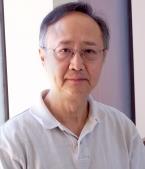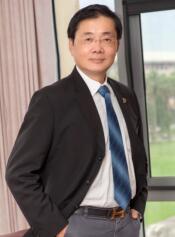Keynote Speakers
 | Prof. James Ting-Ho Lo Department of Mathematics and Statistics, University of Maryland, USA | |
| Biography: Dr. James Ting-Ho Lo is a Professor of Mathematics and Statistics of University of Maryland Baltimore County. He obtained a B.S. and Ph.D. degree from National Taiwan University and University of Southern California respectively. His research interests have included optimal filtering, system control and identification; and machine learning. In 1992, he developed neural filtering, which solved the long-standing notorious problem of optimal nonlinear filtering in its most general setting and obtained a best paper award. Subsequently, he developed adaptive, accommodative and/or robust neural networks for system identification, control and filtering. He has been developing a convexification method for avoiding nonglobal local minima in training deep neural networks, which is ready for application and is nearing a complete solution of the long-standing notorious "local minimum problem". In recent years, Dr. Lo has also been developing a low-order model of biological neural networks. It is a logically coherent and computationally feasible model integrating axonal/dendritic trees, synapses, spiking/nonspiking somas, unsupervised/supervised learning mechanisms, a maximal generalization scheme into a learning machine. The low-order model explains mathematically for the first time how the biological neural networks encode, learn, memorize, recall and generalize. Speech Title: Deep Learning and a New Approach for Machine Learning Abstract: A basis of AI is machine learning, whose state of the art is mainly the highly publicized deep learning. Due to its superior performances in visual recognition, deep learning machines have had a wide range of impressive applications. However, its development for higher level cognitive computing has been stagnant. In this talk, some fundamental shortcomings of deep learning will be examined in connection with big data. A computational model of biological neural networks will be introduced. It provides a logically coherent explanation of how the brain encodes, learns, memorizes, recalls and generalizes. Being used as a learning machine, the computational model can perform real-time, photographic, hierarchical and unsupervised learning. | ||
 | Dr. Peter Fischer IEEE Fellow, Lawrence Berkeley National Laboratory, USA | |
| Biography: Dr. Peter Fischer received his PhD in Physics (Dr.rer.nat.) from the Technical University in Munich, Germany in 1993 on pioneering work with X-ray magnetic circular dichroism in rare earth systems and his Habilitation from the University in Würzburg, Germany in 2000 based on his pioneering work on Magnetic Soft X-ray microscopy. Since 2004 he is with the Materials Sciences Division at Lawrence Berkeley National Laboratory in Berkeley CA. He is Senior Staff Scientist and Principal Investigator in the Non-Equilibrium Magnetic Materials Program and currently also Deputy Division Director at MSD. His research program is focused on the use of polarized synchrotron radiation for the study of fundamental problems in magnetism. Since 2014 he is also Adjunct Professor for Physics at the University of California in Santa Cruz. Dr. Fischer has published more than 200 peer reviewed papers and has given about 300 invited presentations at national and international conferences. He was nominated as Distinguished Lecturer of the IEEE Magnetics Society in 2011. For his achievements of “hitting the 10nm resolution milestone with soft X-ray microscopy” he received the Klaus Halbach Award at the Advanced Light Source in 2010. Dr. Fischer is Fellow of the APS and IEEE. Speech Title: X-raying non-trivial spin textures – recent achievements and future opportunities Abstract: Spin textures and their dynamics hold the key to understand and control the properties, behavior and functionalities of novel magnetic materials, which can impact the speed, size and energy efficiency of spin driven technologies. Advanced characterization tools that provide magnetic sensitivity to spin textures at high spatial resolution, ultimately at buried interfaces and in all three dimensions [1], and at high temporal resolution to capture the spin dynamics across scales, are therefore of large scientific interest. More... | ||
 | Prof. Han-Chieh Chao President, Department of Electrical Engineering, National Dong Hwa University, Halien, Taiwan, China Department of Computer Science and Information Engineering and the Department of Electronic Engineering, National Ilan University, I-Lan, Taiwan, China | |
|
Biography: Han-Chieh Chao received his M.S. and Ph.D. degrees in Electrical Engineering from Purdue University, West Lafayette, Indiana, in 1989 and 1993, respectively. He is currently a professor with the Department of Electrical Engineering, National Dong Hwa University, where he also serves as president. He is also with the Department of Computer Science and Information Engineering, National Ilan University, Taiwan. He was the Director of the Computer Center for Ministry of Education Taiwan from September 2008 to July 2010. His research interests include IPv6, Cross-Layer Design, Cloud Computing, IoT, and 5G Mobile Networks. He has authored or co-authored 4 books and has published about 400 refereed professional research papers. He has completed more than 150 MSEE thesis students and 11 Ph.D. students. Dr. Chao has been invited frequently to give talks at national and international conferences and research organizations. He serves as the Editor-in-Chief for the Institution of Engineering and Technology Networks, the Journal of Internet Technology, the International Journal of Internet Protocol Technology, and the International Journal of Ad Hoc and Ubiquitous Computing. He is a Fellow of IET (IEE) and a Chartered Fellow of the British Computer Society. Due to Dr. Chao’s contribution of suburban ICT education, he has been awarded the US President's Lifetime Achievement Award and International Albert Schweitzer Foundation Human Contribution Award in 2016. Speech Title: Deep Learning Platform for B5G Mobile Network Abstract: The 3G and 4G mobile communications had been developed for many years. The 5G mobile communication is scheduled to be launched in 2020. In the future, a wireless network is of various size of cells and different type of communication technologies, forming a special architecture of Heterogeneous Networks (HetNet). Under the complex network architecture, interference and handover problems are critical challenges in access network. How to efficiently manage small cells and to choose an adequate access mechanism for the better quality of service is a vital research issue. Traditional network architecture can no longer support existing network requirements. It is necessary to develop a novel network architecture. Therefore, this keynote speech will share a solution of deep learning-based B5G mobile network which can enhance and improve communication performance through combing some specific technologies. e.g., deep learning, fog computing, cloud computing, cloud radio access network (C-RAN) and fog radio access network (F-RAN). |
||